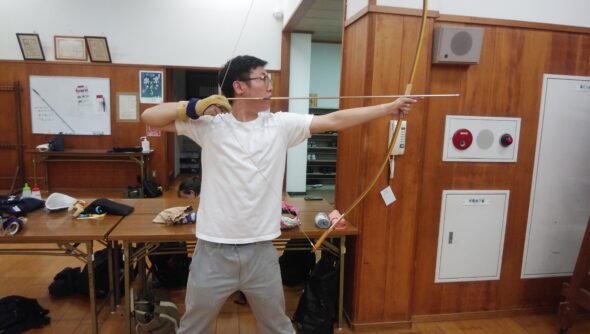 For my CIP this semester, I chose to take lessons in Kyudo, the traditional martial art of archery. I had practices at the Kyoto City Budo Center once or twice a week, and I was instructed by Furuya-sensei, a very kind teacher who has taught KCJS students in the past as well. I have actually been interested in Kyudo for a long time, and I’ve done archery before at a club at my home university, but as Kyudo is a very different kind of activity, I wanted to really learn it from the ground up while I had the rare chance to here in Kyoto. Kyudo is different from regular archery primarily in its objective. Rather than focusing on the particular result of hitting a target accurately, Kyudo emphasizes the form of the process itself, from stepping into the range to drawing the bow and everything in between. The idea is that the shooter focuses not on hitting the target, but completes every defined movement naturally and beautifully with an empty mind, and thus the arrow will always strike its target as a byproduct of one’s consistent efforts. I had an incredible time learning this difficult but rewarding art, and I would encourage anyone even remotely interested to give it a shot. A piece of advice I would give to beginners would be to not go into it with any expectations of yourself, as regardless of your previous experience with archery or other martial arts, you will almost certainly have to learn everything from the ground up, as there are just so many minute details about Kyudo. But should you be willing to fail over and over again until your body has remembered every specific movement and posture, I can guarantee that the feeling of gratification you’ll get when you finally hit the target is like no other.
For my CIP this semester, I chose to take lessons in Kyudo, the traditional martial art of archery. I had practices at the Kyoto City Budo Center once or twice a week, and I was instructed by Furuya-sensei, a very kind teacher who has taught KCJS students in the past as well. I have actually been interested in Kyudo for a long time, and I’ve done archery before at a club at my home university, but as Kyudo is a very different kind of activity, I wanted to really learn it from the ground up while I had the rare chance to here in Kyoto. Kyudo is different from regular archery primarily in its objective. Rather than focusing on the particular result of hitting a target accurately, Kyudo emphasizes the form of the process itself, from stepping into the range to drawing the bow and everything in between. The idea is that the shooter focuses not on hitting the target, but completes every defined movement naturally and beautifully with an empty mind, and thus the arrow will always strike its target as a byproduct of one’s consistent efforts. I had an incredible time learning this difficult but rewarding art, and I would encourage anyone even remotely interested to give it a shot. A piece of advice I would give to beginners would be to not go into it with any expectations of yourself, as regardless of your previous experience with archery or other martial arts, you will almost certainly have to learn everything from the ground up, as there are just so many minute details about Kyudo. But should you be willing to fail over and over again until your body has remembered every specific movement and posture, I can guarantee that the feeling of gratification you’ll get when you finally hit the target is like no other.
Camille Chang: Volunteering at the Kyoto Museum of Crafts and Design
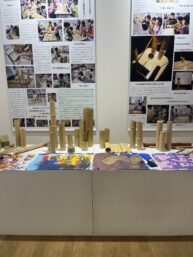
My CIP was volunteering as an interpreter at the Kyoto Museum of Crafts and Design. I met with many craftspeople giving demonstrations at the museum, and translated their explanations of their crafts to English-speaking visitors, and any questions that a visitor might have, into Japanese.
I am an art history major, and I have always had an interest in traditional crafts and folk art, so I wanted to develop more familiarity with the world of Japanese crafts and use my Japanese to do so. I had to switch back and forth between English and Japanese, which turned out to be easier than I thought it would be. The act of interpreting across languages made it easier for me to connect the two cultures that I had to fuse as well. Shaking off habits I had in the U.S. to better fit my lifestyle in Japan, I also found that my Japanese and English also ebbed and flowed to fit each other’s existence in my brain (if that makes sense lol). By using so much Japanese, my English has also changed! This process also taught me a lot about Japanese work culture. I was essentially doing a part-time job at a Japanese museum, and I loved getting to know my coworkers and even translate a few wall labels into English for lacquerware exhibits.
I am super grateful to have had this opportunity while in Kyoto. While volunteering was difficult at times, it gave me a great opportunity to learn more about crafts, meet artisans who have made craft their life, and use my language skills to connect people from across the world.
Naomi Lam: (Classical) Guitar Club
Jason Gonzalez: Kyokushin Karate
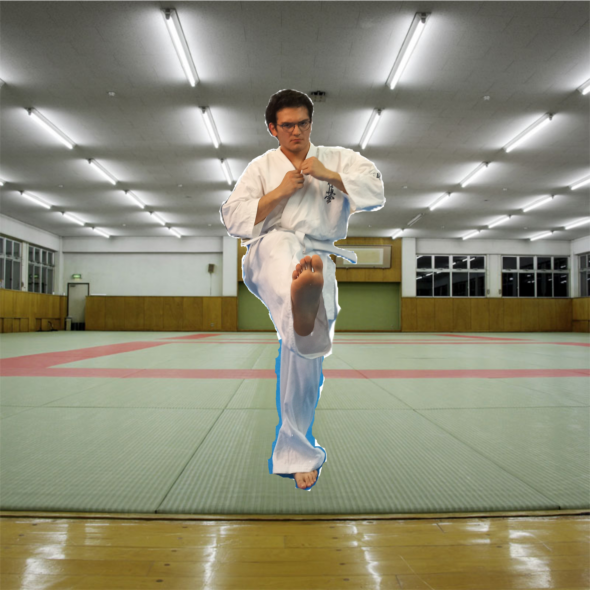
(Edited image as I could not post a photo of the dojo itself)
Kyokushin Karate is a full-body contact sport (advanced training/real matches will involve you getting hit) pioneered by Masutatsu Oyama, which focuses on how gracefully your movements flow into one another but also on the power of your strikes. Moves include punches and kicks, along with blocks/deflects, prioritizing a strong body and sharp mind rather than utilizing evasive tactics.
The sensei was understanding given that it was my first time doing karate and it took me a few weeks (1 practice a week) to learn the basics, and I found that the dojo is considered a sacred but welcoming place with students from all walks of life gathered for the purpose of learning. I chose this activity to supplement my workout routine and to challenge myself in a completely new environment (karate in Japan) which normally requires you to pay close attention and listen to the instructor to do techniques correctly, but now I had to learn new Japanese phrases as well to follow along.
I have several pieces of advice, the first being to practice what you learned on your own time, even for just a bit. Returning to the dojo can be the hardest part as you don’t want to make the same mistakes as before, so practice the basics on your own time to iron out the form and be ready for the upcoming lesson. Here’s a useful link for the basics: (https://youtu.be/2_PRuRqbSLo?feature=shared)
REMEMBER, stretch first. Secondly, learn how to tie your dogi properly, it’s a sign of how prepared you really are, and it prevents your dogi from interfering with your movement. Thirdly, remember that the only way you will improve is to keep trying. You cannot give up midway as that not only stops your progress but, if you are practicing with other students, you will end up getting in their way. I only went to practice once a week, so it took me about 3 to 4 weeks to get most of the basics down. If it takes time for you to learn, don’t worry. Lastly, you should know what is expected. From my experience the positions can be a bit strenuous if you’re not flexible or not used to moving in a controlled motion and then holding a certain position for some time. For example, stretching at one point includes leg splits (no need to go all the way), and for many of the strikes you have to place your feet inward with one foot slightly in front. I’ve been running so I was not out of breath, but it would be a good idea to work on your body condition and balance. I did not know before starting that beginner lessons were more or less just practicing form and strikes, while the sparring lessons were their own class. If you want to spar, I recommend fixing your form first. When you decide to attend the sparring class, be ready to spend a decent amount on required assist/protection, and to get hit. Most lessons that would pertain to you occur in the afternoon, mine was around 8pm. If you can dedicate time, effort, and passion to learn this martial art, I recommend doing so.
Judson Buchko: Teaching Assistant at Ohara Gakuin
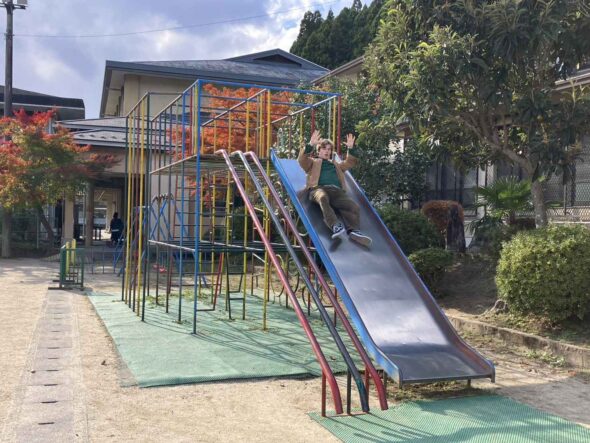
My CIP was as a English teaching assistant at Ohara Gakuin, a 1st-9th grade regional school just outside of Kyoto in the sleepy town of Ohara. I assisted the English teachers there along with my fellow KCJS student Sebastian as an English conversation partner with the students, as well as assisting in class lessons by providing a native perspective and native fluency. Ohara is a beautiful little town located in the northern mountains behind Kyoto, and every time I took the bus up there each week, I was astounded once again without fail of its natural beauty. The students there were very kind, and were very patient with my not-yet-fluent Japanese skills, and I ended up making a few connections that, I think, will be important memories for these students as they grow up– reminding them that there are friends and connections to be made with people regardless of their home country, language, appearance, et cetera. To incoming students, I would say that while you’re in Japan, try and engross yourself at least in some way in the everyday lives of Japanese people. Try to get outside of the 留学生 bubble at least a little bit, and immerse yourself, even if it’s hard, as putting yourself in something like a school setting, or a workplace setting, really helps you gain some valuable and unique cultural perspective on the everyday culture and activities of real Japanese people.
Anna Trapani: Volunteering at Nagaoka-kyo Children’s Center
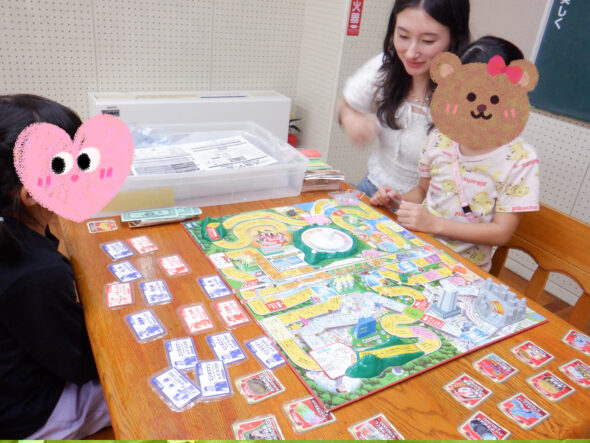 For my CIP I chose to volunteer at an after-school children’s center that was near my homestay. The kids were elementary to middle schoolers, and I got to play games with them, help with homework, practice my Japanese, and learn about what childhood is like in Japan. It was an amazing experience that really made me feel like a part of the community. The memories I made with the children and the staff members will be forever very special to me. For those who are not the best at putting themselves out there in the social setting, I really recommend 1. volunteer activities, because they give you a sense of purpose, and/or 2. working with kids, since they will immediately take a liking to you. For those who do chose a similar CIP, I recommend getting to know some Japanese names for games beforehand and teaching the children games you used to play, too!
For my CIP I chose to volunteer at an after-school children’s center that was near my homestay. The kids were elementary to middle schoolers, and I got to play games with them, help with homework, practice my Japanese, and learn about what childhood is like in Japan. It was an amazing experience that really made me feel like a part of the community. The memories I made with the children and the staff members will be forever very special to me. For those who are not the best at putting themselves out there in the social setting, I really recommend 1. volunteer activities, because they give you a sense of purpose, and/or 2. working with kids, since they will immediately take a liking to you. For those who do chose a similar CIP, I recommend getting to know some Japanese names for games beforehand and teaching the children games you used to play, too!
Anna Yan: Volunteering at 聖マリア幼稚園 子ども食堂 (Kodomo Shokudō)
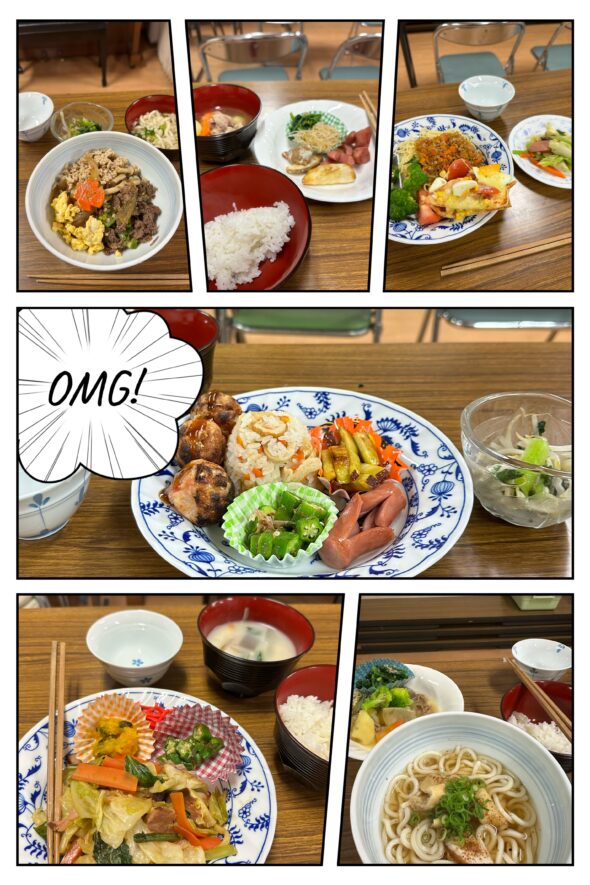
At Kodomo Shokudō, I volunteer to help create a welcoming space where children and families can enjoy meals together. My main tasks include assisting with meal preparation and cleanup and interacting with children to build connections and learn more about Japanese culture.
This experience has taught me the importance of communication and adaptability in cross-cultural settings. Engaging with the children has been a highlight, helping me understand Japanese values like politeness and community through their actions. Plus, the food is really good – it’s always a treat to enjoy the delicious and balanced meals prepared here.
Don’t be afraid to step out of your comfort zone and engage with others, even if your Japanese isn’t perfect. Small efforts, like asking questions or sharing activities, go a long way in building meaningful connections.
Jessica Sun: Sadou
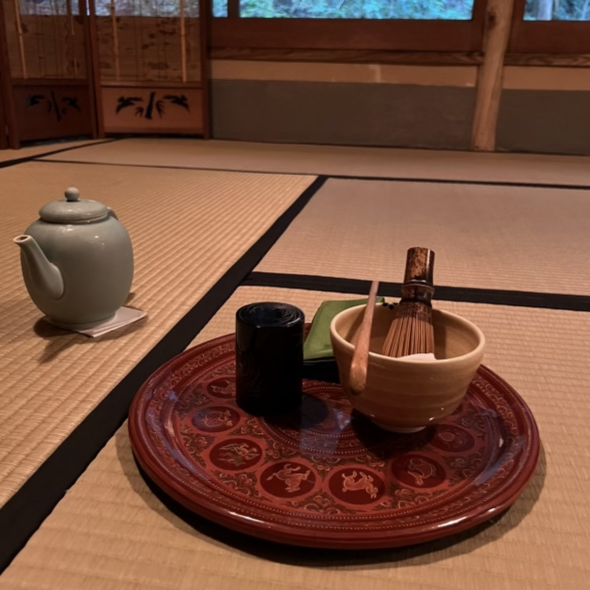
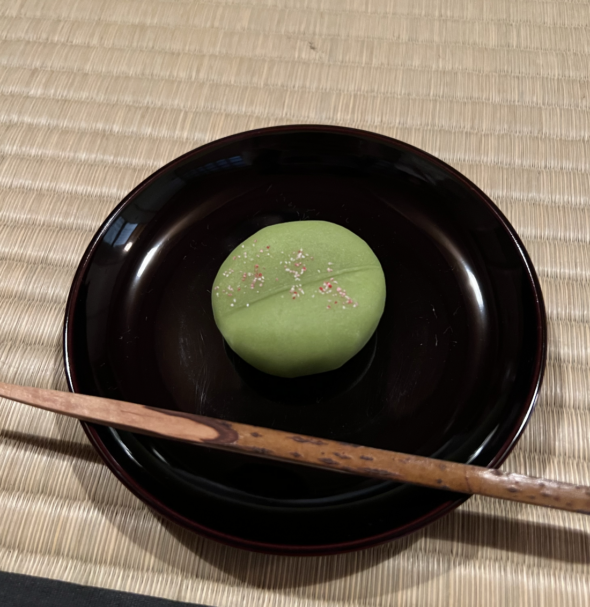
My CIP activity was sadou (茶道) at Wabichakai, taught by Fujimura-sensei. Sadou is basically the Japanese traditional etiquette of preparing, making, serving, and consuming matcha.
I was interested in sadou because I didn’t know much about anything related to the history or culture of tea in Japan. I also was looking for something that was very traditional and hard to learn outside of Japan, or even Kyoto. Therefore, I think this was a great choice because I think the experience definitely embodied a very traditional and Kyoto-style environment. You will observe and learn how to fold the handkerchief properly, clean and prepare the materials, whisk the matcha, and drink the matcha. There are also other elements, such as meditation and eating wagashi (Japanese confectionery).
Overall, I would recommend this CIP if you are interested in a very traditional and culture/history/religion heavy topic. The lessons do consist a lot of the sensei just talking, so I do recommend it more for those with higher listening proficiency. Also, because of how much time the sensei spends explaining the background or anecdotal stories, the time to actually do the activity hands-on is less, which led to slow progression, in my opinion. However, I still enjoyed the experience, and I bought the whisk, handkerchief, and other materials, so I think it’s something I will definitely continue to do on my own when I go back to the US. Overall, I think it was really unique and not something I could’ve done elsewhere!
Chisom Akpom: Pottery Studio
During my time in Kyoto, I was able to participate in a local pottery studio for my CIP. They welcomed me even though I had no prior experience, and more than simply treating me with kindness, truly let me become a part of their family.
My teacher had a step-by-step plan for me to follow in order to advance in my pottery skills as a total beginner. In my few lessons there, I learned how to make a vase and a mug and designed them how I found fit. Not only did the lessons allow me to get a hang of the fundamentals, but I had total creative freedom and was supported by everyone around me to pursue anything that interested me that day. Although I started off shy and nervous, their warm nature made it easy for me to feel comfortable and eventually join in on their fun. Through the laughter and many jokes, I was able to not only better my intercultural competence, but learn from them how to live a better life.
To get the most of your experience, find ways you can connect with the people around you. If they mention something interesting, ask them about it. If you don’t understand their Japanese, be honest. While some CIPs don’t have much room for you to bond with the members, pottery made it easy because of the classroom’s nature: everyone sits around the same table with snacks and a drink, and speaks while they work. The more you speak, the closer you get, so make an effort to engage even if it scares you at first.
Tomas Serna: Koto
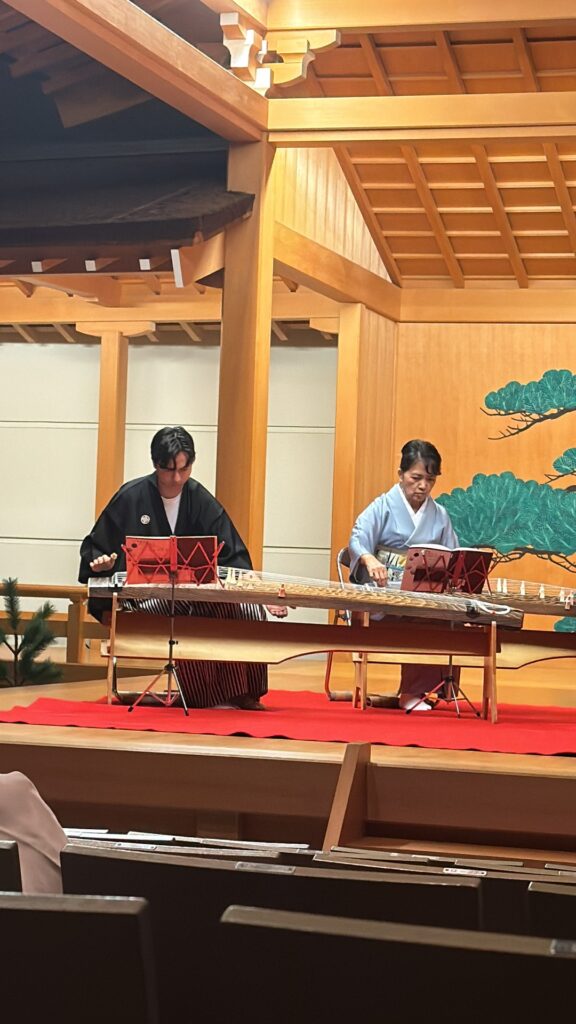
For my CIP, I learned the koto, a traditional Japanese 13-stringed instrument, through taking lessons with my teacher Iwasaki sensei. Because I had experience with musical instruments before, I thought it would be a great opportunity for me to learn a traditional Japanese instrument and see how the experience compared to the previous instruments I learned. My CIP experience was very worthwhile, especially due to the friendly and welcoming environment Iwasaki sensei created for me during our practices. Unlike strict one-on-one sessions where you might be afraid to make a mistake, Iwasaki sensei allowed me to play from almost the very beginning with the rest of her students in her workshop, making me truly feel like part of the group. The atmosphere was always very lively and positive, and I had a lot of fun talking and getting to know the rest of her students, which were mostly elderly people who have been playing their respective instruments for a while. I was also able to perform the piece that I had been practicing since the beginning of the CIP which was an unforgettable experience and something I couldn’t even imagine doing before the start of the program. I am so grateful for Iwasaki sensei and all of her kind students who helped me along the way, and the opportunity to show what I learned over the past 2 months in a concert setting. No matter your music ability, learning a traditional Japanese instrument is a completely different experience all together, but I would advise incoming students not to worry at all as you are in the best of hands, and by the end of the program you will definitely feel like part of Iwasaki sensei’s big family of musicians in her studio.
